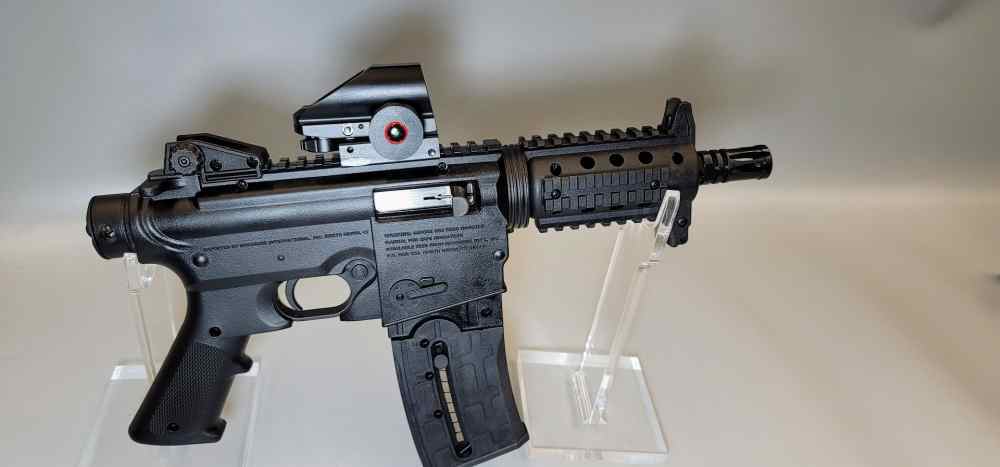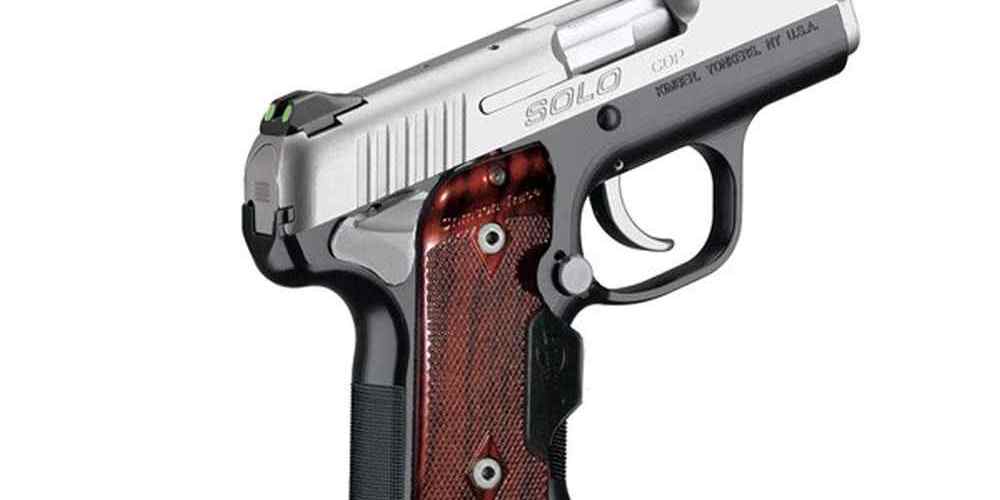“From humble beginnings to modern marvels, tracing the evolution of semi-auto pistols through history.”
Development of Semi-Auto Pistols
Semi-automatic pistols have come a long way since their inception in the late 19th century. These firearms have revolutionized the way we think about handguns, offering increased firepower and ease of use compared to their predecessors. In this article, we will take a closer look at the development of semi-auto pistols and how they have evolved over the years.
The first semi-automatic pistol was invented by Austrian engineer Josef Laumann in 1892. This early design, known as the C93 Borchardt, featured a toggle-lock mechanism and was chambered in 7.65mm. While the C93 Borchardt was not widely adopted, it laid the groundwork for future semi-auto pistol designs.
One of the most significant advancements in semi-auto pistol technology came in 1900 with the introduction of the Luger P08. Designed by Georg Luger, this pistol featured a toggle-lock mechanism similar to the C93 Borchardt but was chambered in 9mm Parabellum, a more powerful cartridge. The Luger P08 was widely adopted by the German military and saw extensive use during both World Wars.
In the years following World War II, semi-auto pistol technology continued to evolve. One of the most notable developments was the introduction of the Browning Hi-Power in 1935. Designed by John Browning and Dieudonné Saive, the Hi-Power was the first pistol to feature a double-stack magazine, allowing for increased ammunition capacity. The Hi-Power was also one of the first pistols to use a single-action trigger mechanism, which provided a lighter trigger pull and improved accuracy.
Throughout the 20th century, semi-auto pistols continued to evolve with the introduction of new materials and manufacturing techniques. In the 1980s, polymer-framed pistols such as the Glock 17 began to gain popularity due to their lightweight construction and corrosion resistance. These pistols also featured striker-fired mechanisms, which provided a consistent trigger pull and improved reliability.
In recent years, semi-auto pistols have continued to evolve with the introduction of new features and technologies. One of the most significant advancements has been the development of modular pistols such as the Sig Sauer P320. These pistols allow users to easily swap out components such as grips and slides, making them highly customizable to individual preferences.
Another recent development in semi-auto pistol technology is the introduction of optics-ready pistols. These pistols feature mounting plates that allow users to easily attach red dot sights for improved accuracy and target acquisition. Optics-ready pistols have become increasingly popular among competitive shooters and law enforcement agencies.
In conclusion, the evolution of semi-auto pistols has been a fascinating journey that has seen significant advancements in technology and design. From the early toggle-lock mechanisms of the C93 Borchardt to the modular pistols of today, semi-auto pistols have come a long way in terms of reliability, accuracy, and customization options. As technology continues to advance, it will be interesting to see how semi-auto pistols continue to evolve in the years to come.

Key Innovations in Semi-Auto Pistol Design
Semi-automatic pistols have come a long way since their inception in the late 19th century. Over the years, there have been numerous key innovations in semi-auto pistol design that have helped shape the modern firearms we see today. From the introduction of the first semi-auto pistol by Austrian inventor Josef Laumann in 1892 to the latest advancements in materials and technology, the evolution of semi-auto pistols has been a fascinating journey.
One of the key innovations in semi-auto pistol design was the introduction of the blowback system. This system uses the force of the cartridge being fired to push the slide back, ejecting the spent casing and chambering a new round. This design allowed for faster and more reliable cycling of the pistol, making it a popular choice among military and law enforcement agencies.
Another important innovation in semi-auto pistol design was the introduction of the double-action trigger mechanism. This mechanism allows the pistol to be fired either by pulling the trigger in a single action, or by cocking the hammer first and then pulling the trigger in a double action. This innovation provided shooters with more options for how they wanted to fire their pistol, making it more versatile and user-friendly.
In the 20th century, advancements in materials and manufacturing processes led to the development of polymer-framed pistols. These pistols are lighter and more durable than their metal counterparts, making them a popular choice for concealed carry and everyday carry. The introduction of polymer-framed pistols revolutionized the firearms industry and paved the way for further innovations in semi-auto pistol design.
One of the most significant innovations in semi-auto pistol design in recent years has been the development of striker-fired pistols. Striker-fired pistols use a spring-loaded firing pin that is partially cocked when the slide is cycled, eliminating the need for an external hammer. This design simplifies the pistol’s operation and reduces the number of moving parts, making it more reliable and easier to maintain.
Advancements in ergonomics and grip design have also played a crucial role in the evolution of semi-auto pistols. Manufacturers have introduced interchangeable backstraps and grip panels, allowing shooters to customize their pistol to fit their hand size and shooting style. This has made semi-auto pistols more comfortable and easier to shoot, leading to improved accuracy and performance on the range.
In conclusion, the evolution of semi-auto pistols has been a continuous process of innovation and improvement. From the introduction of the blowback system and double-action trigger mechanism to the development of polymer-framed and striker-fired pistols, each new advancement has helped shape the modern firearms we see today. As technology continues to advance, we can expect to see even more innovations in semi-auto pistol design in the years to come.
Impact of Semi-Auto Pistols on Military and Law Enforcement
Semi-automatic pistols have played a significant role in the evolution of firearms technology, particularly in the realms of military and law enforcement. These firearms have revolutionized the way armed forces and police officers operate, providing them with increased firepower, faster reload times, and improved accuracy. The impact of semi-automatic pistols on these sectors cannot be overstated, as they have become essential tools for ensuring the safety and security of individuals and communities.
One of the key advantages of semi-automatic pistols is their ability to fire multiple rounds without the need to manually cock the weapon between shots. This feature allows for rapid and continuous fire, making semi-automatic pistols highly effective in combat situations. In military operations, this increased firepower can mean the difference between life and death for soldiers on the front lines. Similarly, in law enforcement scenarios, the ability to quickly neutralize threats is crucial for ensuring the safety of officers and civilians alike.
Another important benefit of semi-automatic pistols is their quick reload times. Unlike revolvers, which require each round to be individually loaded into the cylinder, semi-automatic pistols use detachable magazines that can be easily swapped out for a fresh supply of ammunition. This allows for faster reloads, enabling users to get back into the fight more quickly. In high-pressure situations where every second counts, this can be a game-changer.
In addition to their increased firepower and faster reload times, semi-automatic pistols also offer improved accuracy compared to other types of firearms. The design of these weapons typically includes features such as adjustable sights, ergonomic grips, and smooth trigger pulls, all of which contribute to better shot placement. This is especially important in law enforcement situations where officers must make split-second decisions under duress. The ability to accurately hit targets can mean the difference between resolving a situation peacefully and escalating it into a dangerous confrontation.
The impact of semi-automatic pistols on military and law enforcement operations has been profound, shaping the way these organizations approach training, tactics, and equipment procurement. As technology has advanced, so too have the capabilities of semi-automatic pistols, with new models incorporating features such as ambidextrous controls, accessory rails, and improved ergonomics. These advancements have further enhanced the effectiveness of these firearms in the field, making them indispensable tools for those who rely on them for their safety and security.
In conclusion, the evolution of semi-automatic pistols has had a significant impact on military and law enforcement operations. These firearms provide increased firepower, faster reload times, and improved accuracy, making them essential tools for those who rely on them in high-stakes situations. As technology continues to advance, so too will the capabilities of semi-automatic pistols, ensuring that they remain at the forefront of firearms technology for years to come.
Evolution of Semi-Auto Pistol Calibers
Semi-automatic pistols have come a long way since their inception in the late 19th century. One of the key aspects of their evolution has been the development of different calibers to suit various needs and preferences. In this article, we will take a closer look at the evolution of semi-auto pistol calibers and how they have changed over time.
When semi-automatic pistols were first introduced, they typically used smaller calibers such as .32 ACP or .380 ACP. These calibers were popular for their compact size and ease of concealment, making them ideal for self-defense purposes. However, as technology advanced and firearms became more powerful, larger calibers began to gain popularity.
One of the most significant developments in semi-auto pistol calibers was the introduction of the 9mm Parabellum round. Developed by Georg Luger in the early 20th century, the 9mm round quickly became one of the most popular calibers for semi-automatic pistols. Its combination of power, accuracy, and manageable recoil made it a favorite among military and law enforcement agencies around the world.
In the mid-20th century, the .45 ACP caliber also gained popularity among shooters for its stopping power and effectiveness in combat situations. The .45 ACP round was first introduced in the early 1900s for use in the Colt M1911 pistol and has since become a staple in the firearms industry. Its larger size and heavier bullet make it a favorite among those who prioritize stopping power over capacity.
In recent years, there has been a resurgence of interest in smaller calibers such as the .380 ACP and .32 ACP for concealed carry purposes. Advances in ammunition technology have made these smaller calibers more effective than ever, with some manufacturers even producing hollow-point rounds specifically designed for self-defense.
Another trend in semi-auto pistol calibers is the rise of the .40 S&W round. Developed in the late 1980s as a compromise between the 9mm and .45 ACP calibers, the .40 S&W round offers a balance of power and capacity that has made it popular among law enforcement agencies in the United States. Its popularity has also led to the development of a wide range of pistols chambered in .40 S&W, making it a versatile option for shooters of all skill levels.
As technology continues to advance, we can expect to see even more innovations in semi-auto pistol calibers. From improved ballistics to new materials and designs, the future of pistol calibers is bright. Whether you prefer the compact size of a .380 ACP or the stopping power of a .45 ACP, there is a caliber out there to suit your needs.
In conclusion, the evolution of semi-auto pistol calibers has been a fascinating journey that has seen the development of a wide range of options for shooters. From the compact .32 ACP to the powerful .45 ACP, there is a caliber out there for every preference and purpose. As technology continues to advance, we can expect to see even more innovations in pistol calibers that will further enhance the shooting experience for enthusiasts around the world.
Future Trends in Semi-Auto Pistol Technology
Semi-automatic pistols have come a long way since their inception in the late 19th century. From the early designs of John Browning to the modern innovations of today, these firearms have evolved significantly in terms of design, functionality, and performance. In this article, we will take a closer look at the historical evolution of semi-auto pistols and explore some of the future trends in pistol technology.
The first semi-automatic pistol was invented by John Browning in 1896. This early design, known as the FN Model 1900, featured a slide that automatically chambered a new round after each shot, allowing for faster and more efficient shooting. Browning’s innovative design quickly gained popularity among military and law enforcement agencies around the world, setting the stage for the widespread adoption of semi-automatic pistols in the years to come.
Over the next few decades, semi-automatic pistols continued to evolve, with manufacturers introducing new features and improvements to enhance their performance. One of the most significant advancements came in the form of double-action triggers, which allowed shooters to fire the pistol by simply pulling the trigger, without the need to manually cock the hammer. This innovation made semi-automatic pistols easier to use and more reliable in high-stress situations.
In the 1980s and 1990s, the development of polymer-framed pistols revolutionized the industry. These lightweight and durable firearms quickly became popular among civilian shooters and law enforcement agencies, thanks to their ergonomic design and improved recoil control. Today, polymer-framed pistols are among the most widely used firearms in the world, with manufacturers constantly pushing the boundaries of design and technology to create even more advanced models.
Looking ahead, the future of semi-automatic pistol technology is bright. One of the most exciting trends in pistol design is the integration of smart technology, such as biometric sensors and electronic sights, to enhance accuracy and safety. These features allow shooters to customize their pistols to suit their individual preferences and shooting styles, making them more versatile and user-friendly than ever before.
Another emerging trend in pistol technology is the use of advanced materials, such as carbon fiber and titanium, to create lighter and stronger firearms. These materials offer improved durability and performance, making them ideal for use in high-stress environments and extreme conditions. Additionally, manufacturers are exploring new ways to reduce recoil and improve accuracy through the use of innovative barrel designs and muzzle devices.
In conclusion, the evolution of semi-automatic pistols has been a remarkable journey, marked by continuous innovation and improvement. From the early designs of John Browning to the cutting-edge technology of today, these firearms have come a long way in terms of design, functionality, and performance. As we look to the future, it is clear that the trend towards smarter, lighter, and more advanced pistols will continue, pushing the boundaries of what is possible in firearm design and technology. With each new advancement, semi-automatic pistols will become even more versatile, reliable, and user-friendly, ensuring that they remain a vital tool for shooters of all skill levels for years to come.




